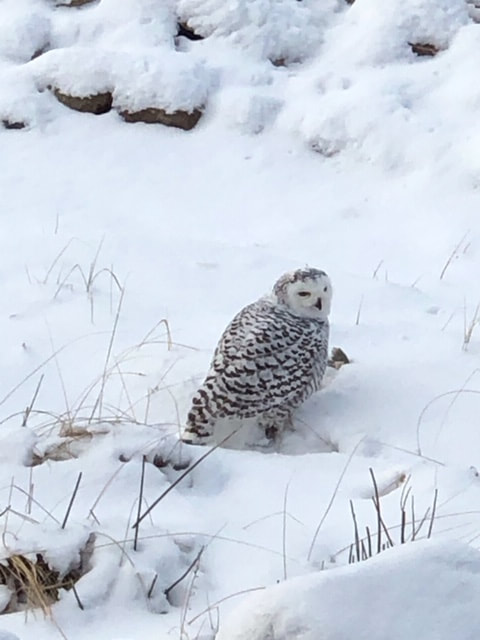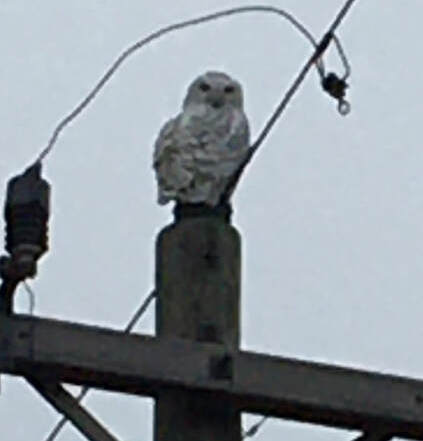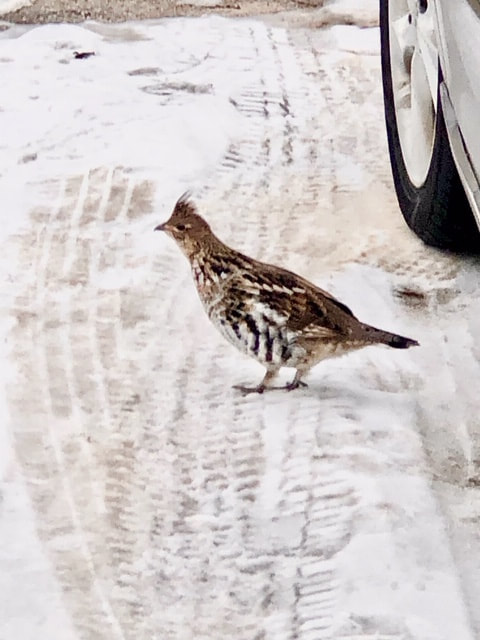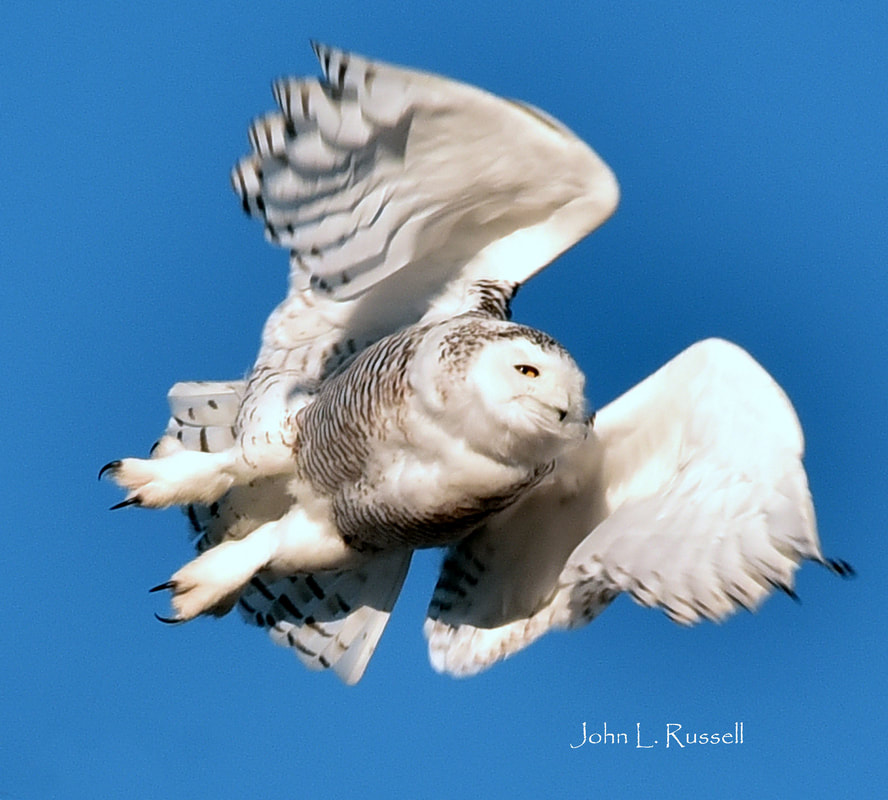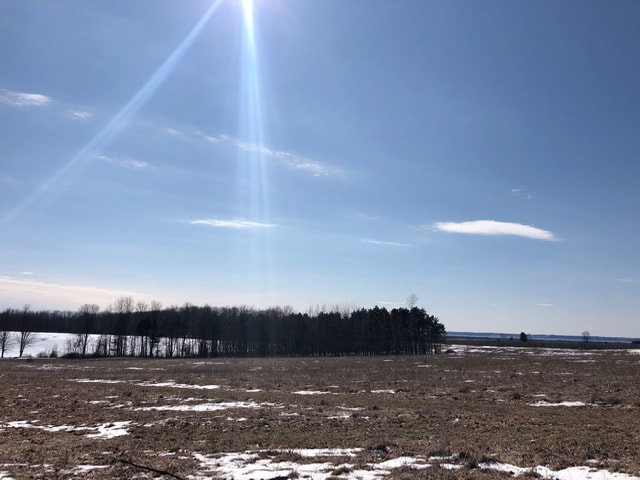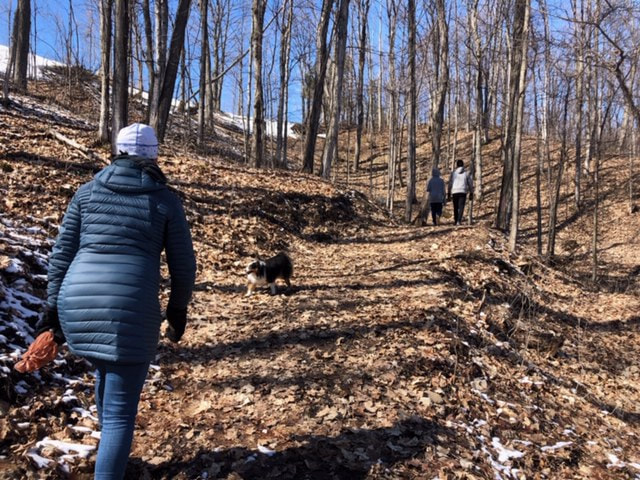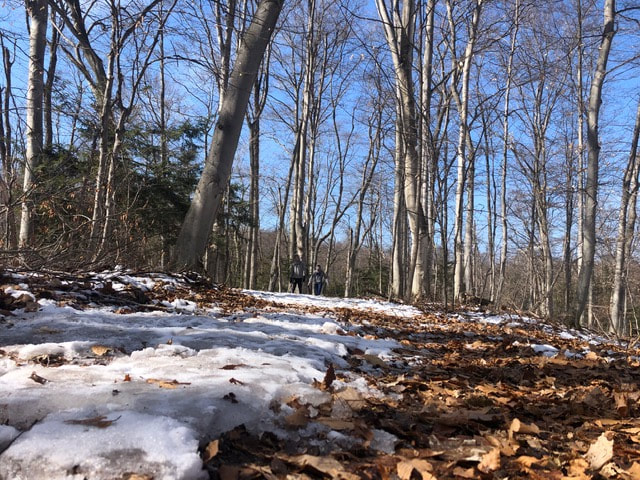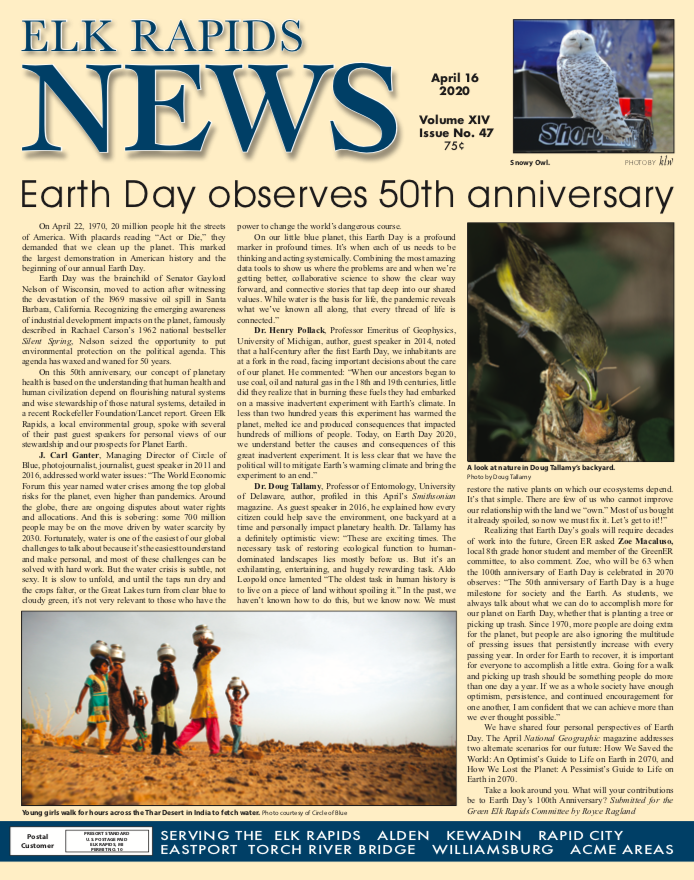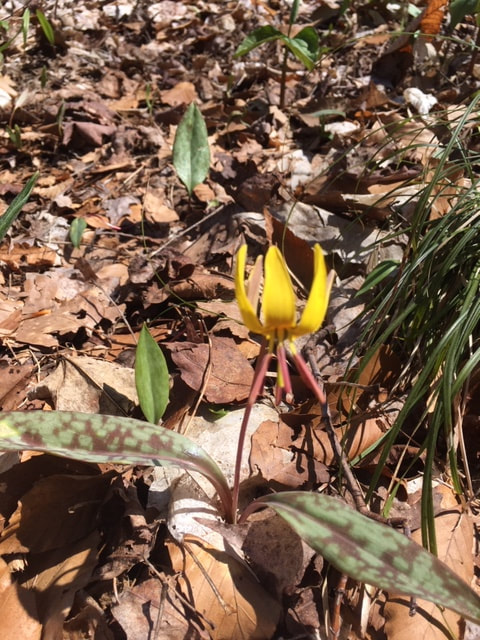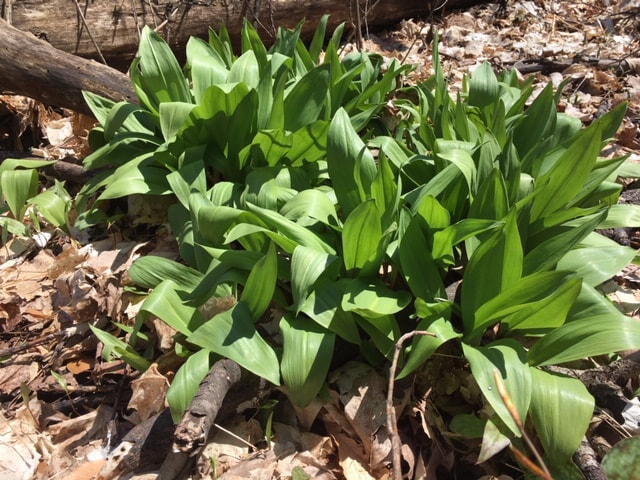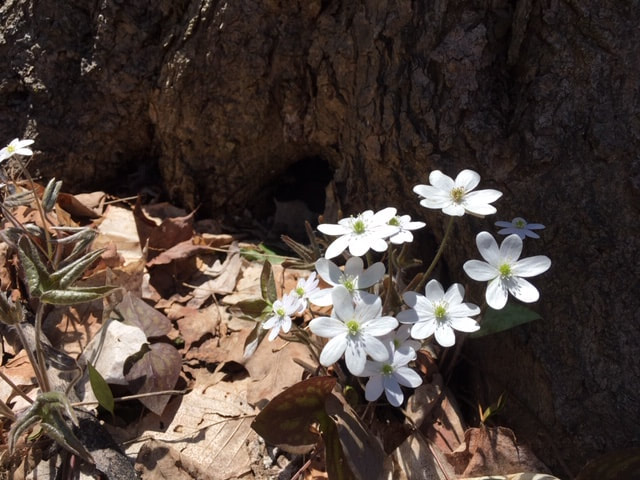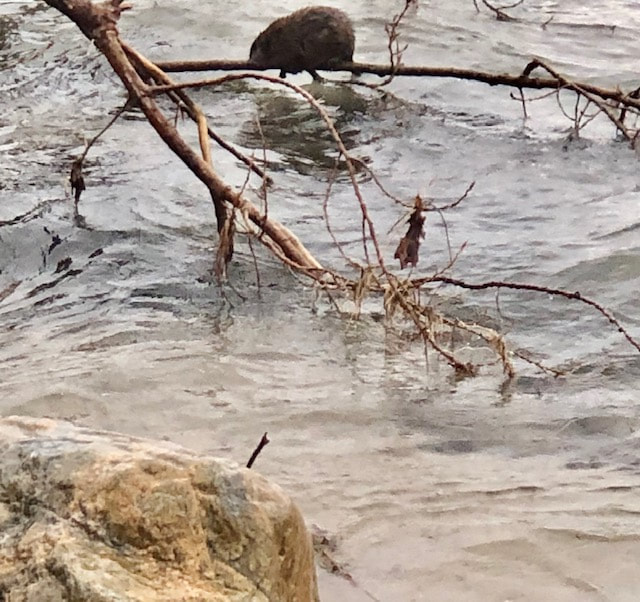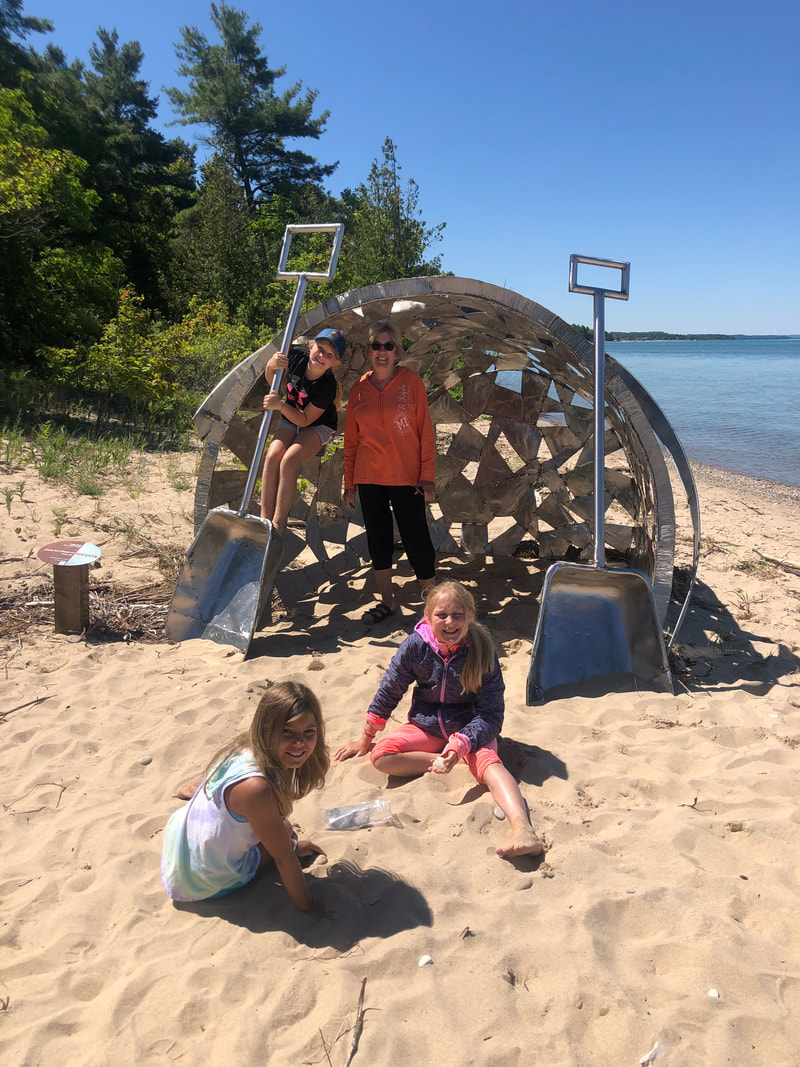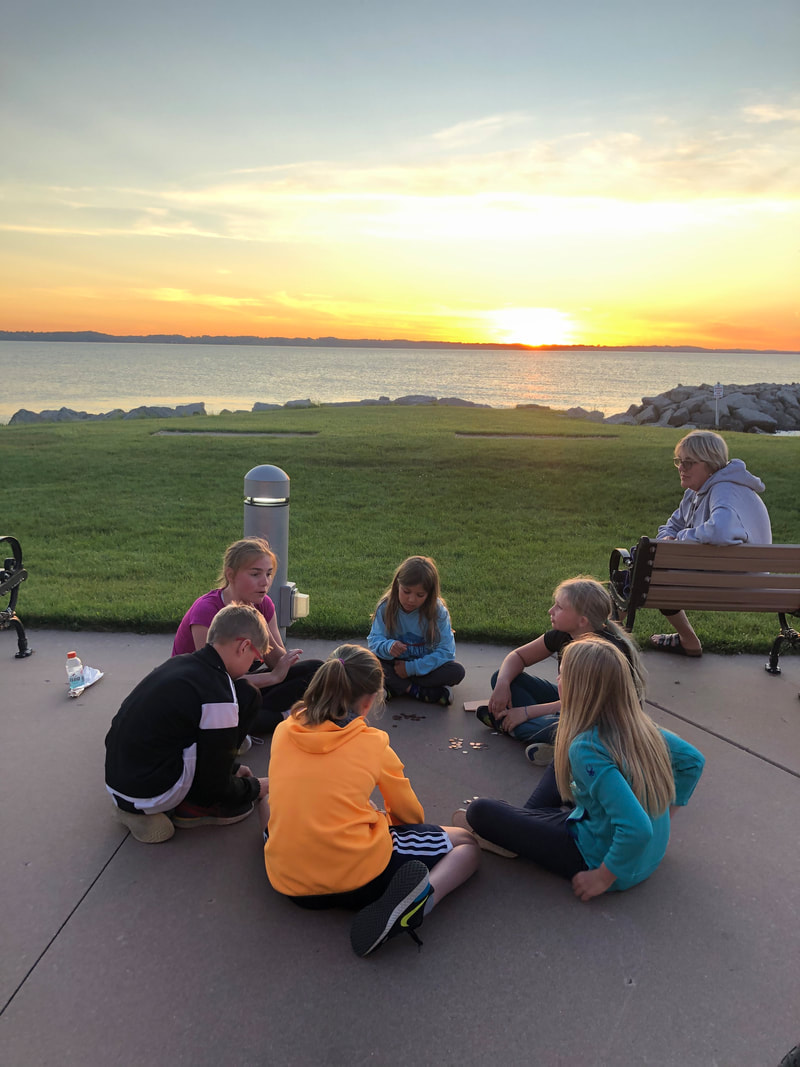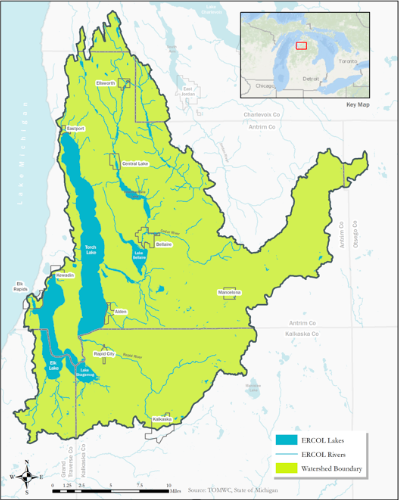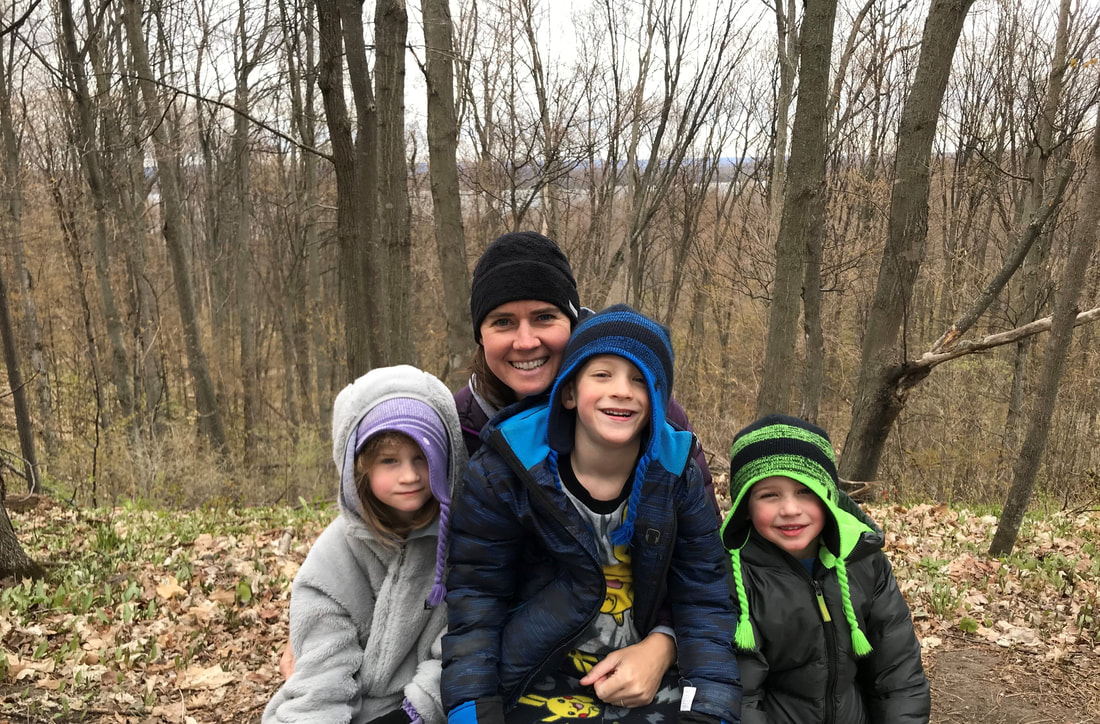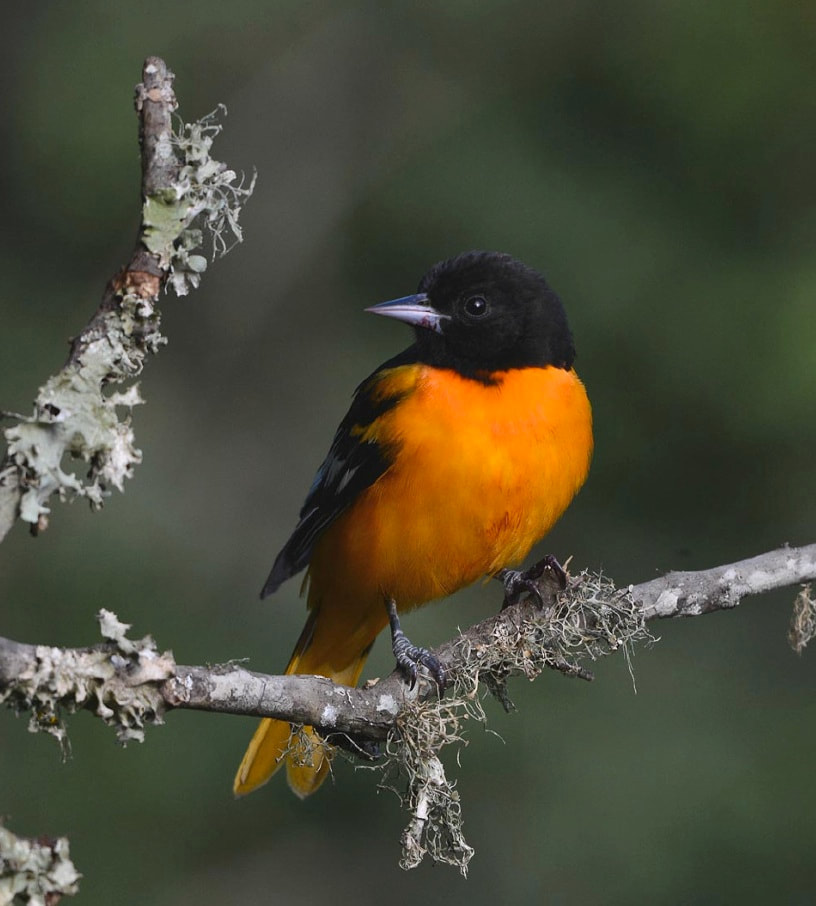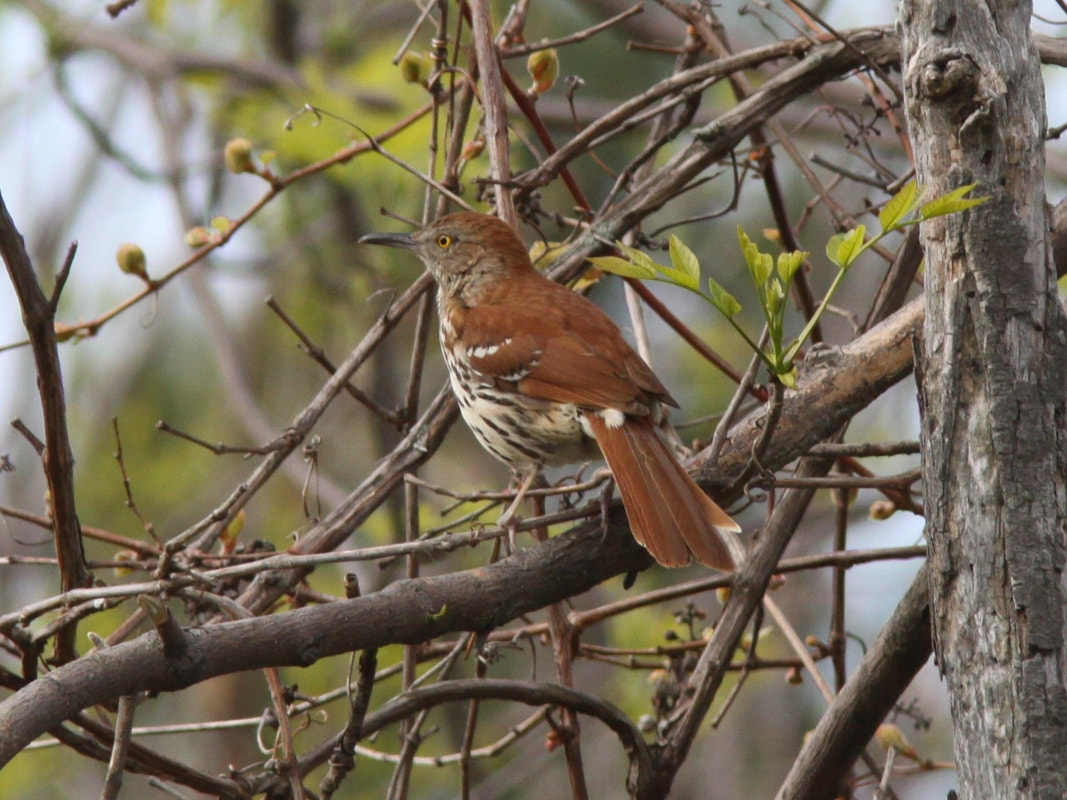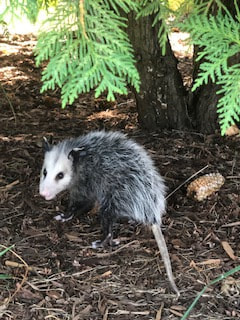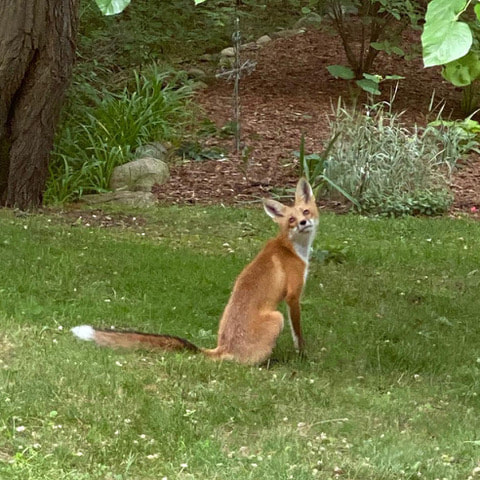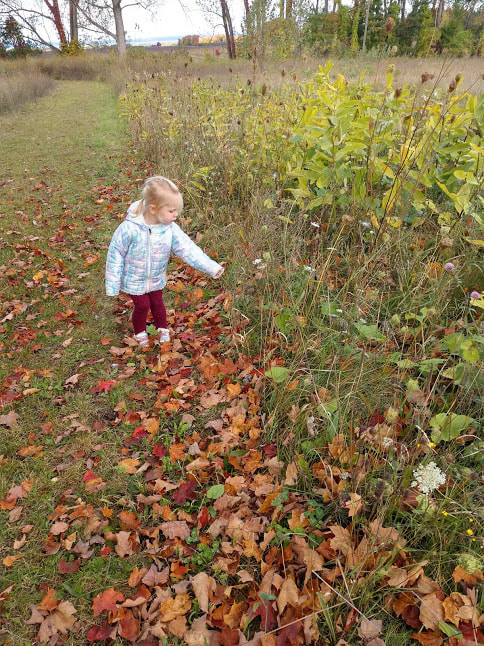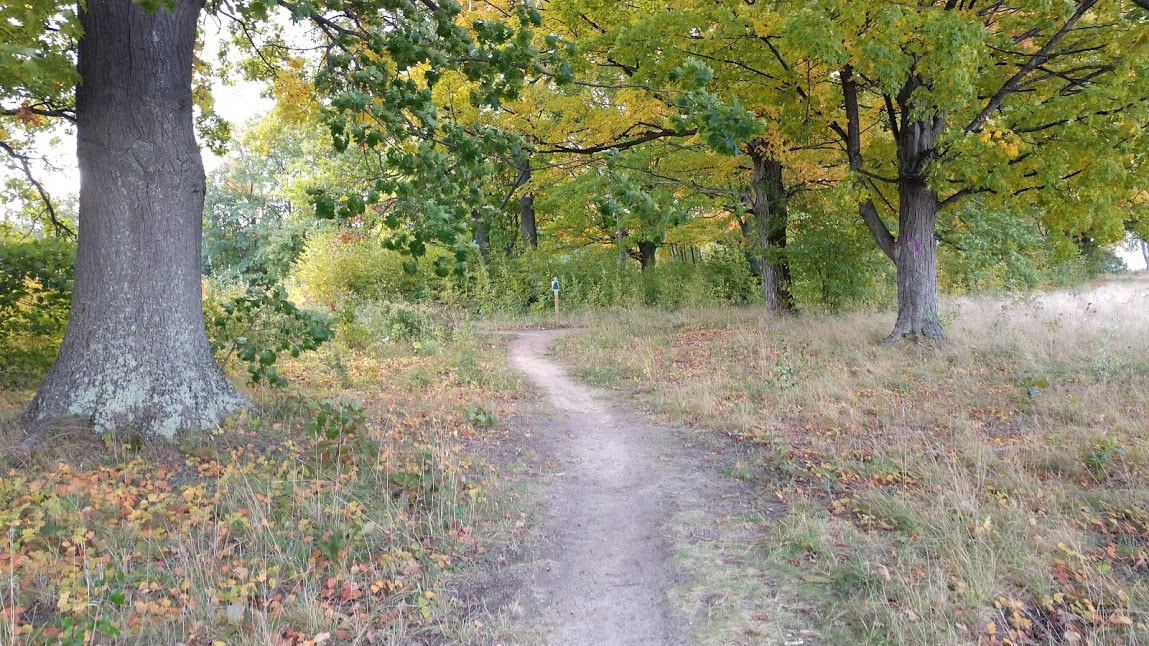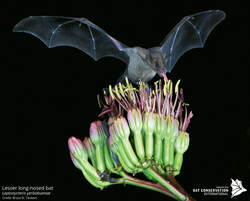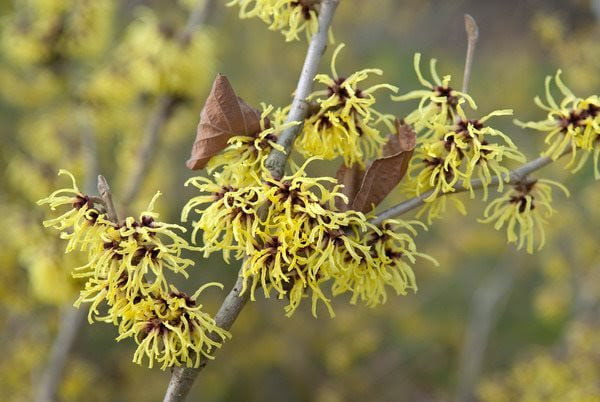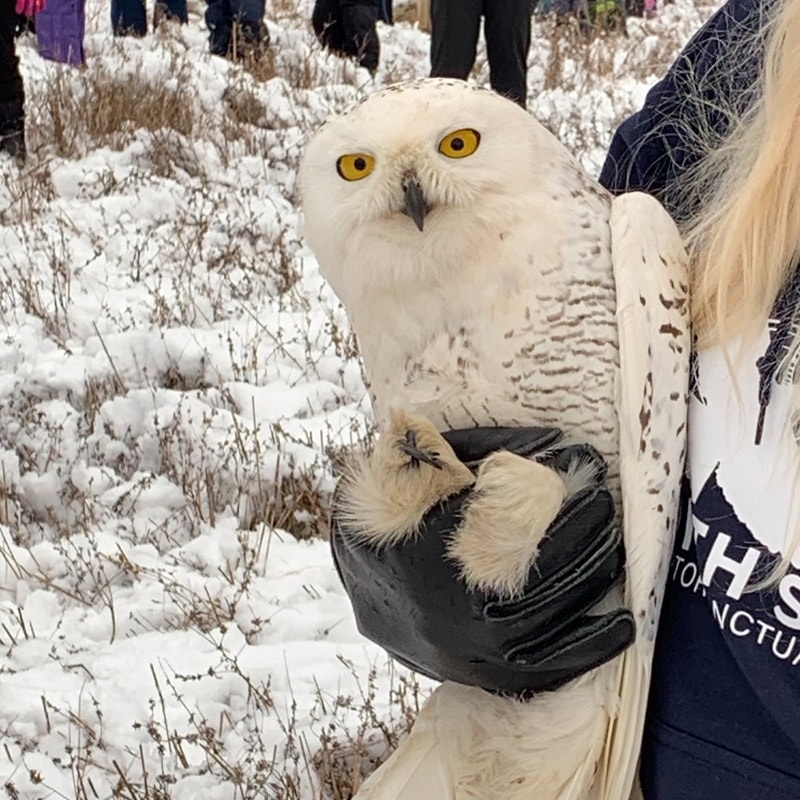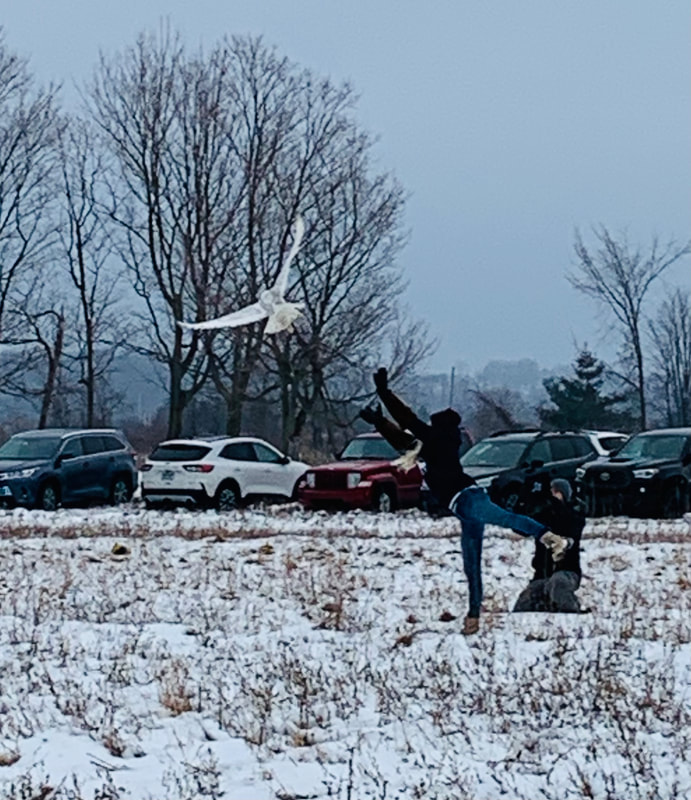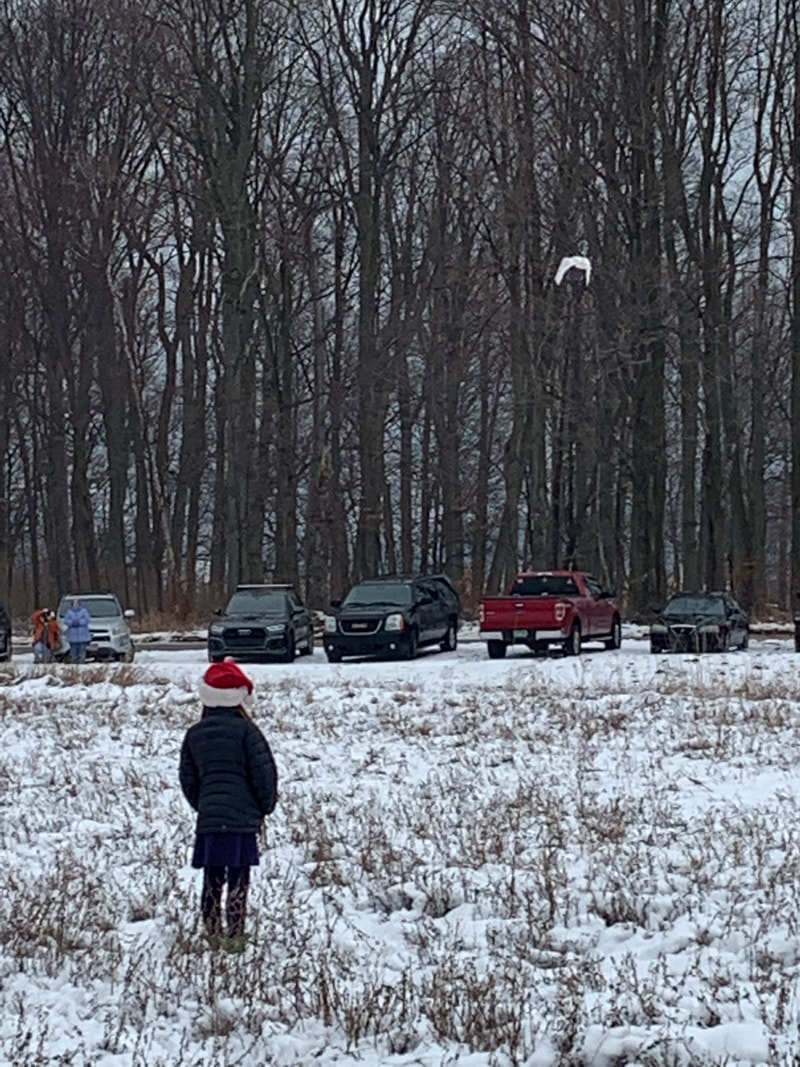While 2020 was an interesting year with a global pandemic, Elk Rapids residents were still able to get out and enjoy nature, If anything, getting out safely was even more important in a year when we couldn't gather many people at a time indoors. March of 2020 was when Michigan "Stay at Home" orders went into effect. Check out how Green ER folks were still able to enjoy the beauty that the Elk Rapids area had to offer.
Please note: this page and other previous almanac pages are currently under construction. Thanks for your patience!
Please note: this page and other previous almanac pages are currently under construction. Thanks for your patience!
JANUARY 2020
|
December 27 - Snowy Owl report. After hiking at Maplehurst today I found this Snowy Owl sitting on a telephone pole on Waring Road. -Gary Stauffer
January 2 - While watching birds at our feeder this afternoon, a Peregrine Falcon came down and landed in the snow with its prey in its claws. It finally flew off with its prize. -Gary Stauffer. January 3 - We were looking out our window on North Bayshore and saw a beautiful Snowy Owl. He sat on our shoreline for 30 minutes while viewing the sights of the Bay, and then flew away. -Mike and Denise Easley. January 12 - We spied a beautiful large red fox running alongside the woods across from our house and then it looked straight at us and crossed into our neighbor’s yard. It is so nice to see healthy wildlife in the neighborhood. -Terri Reisig. January 16 - Two eagles flew overhead just as I opened the shades. Perfect timing for looking out the window! Michigan’s eagle population is healthier than in years past. It’s been reported there are now 800 nesting pairs. -Ellen Baird. January 17 - The foxes are back. Last year we had a definite surplus of rabbits in town. That may be changing. I was sitting at my desk looking out at the yard just as the sun broke through on the fresh snow. All of a sudden two beautiful adult foxes ran full speed across the area. They were having fun on a gorgeous day. What a great sight! -Tom Baird. January 20 - While driving just north of Elk Rapids, my friend and I spotted a bobcat! It stood up in front of our car from the side of route 31 and jumped into the woods. It happened so quickly. It was our first sighting of a bobcat. -Intrepid motorists on a snowy day. Heads Up: GreenER Reads “The Hidden Life of Trees”, by Peter Wohlenben. April 28. Copy available in Elk Rapids district library. Photo top left: Snowy Owl on ground near North Bayshore - photo by Mike and Denise Easley Photo on bottom left: Snowy owl on Waring Road - photo by Gary Stauffer |
FEBRUARY 2020
|
January 30 - This grouse was spotted downtown in the back alley behind the post office. It was darting under cars and poking its head back out looking around. It was pretty bold and was looking for food. -Lauren Dake.
February 2 - I had just pulled in my driveway, suddenly looked to my right and saw two foxes playing in my backyard! One had his chin down in the snow & was pushing himself forward. The other, who appeared to be lame and holding its rear leg up, laid down and rolled over and over!!! Playtime didn't last very long. Both left my yard, turning right on Ash Street. 2 foxes on the 2nd day of the 2nd month of the year 2020. Must be a good sign! -Liz Delarosa. February 8 - Here are a couple of owls spotted nearby. - John Russell. February 9 - We were driving on Waring Road just west of Maplehurst natural area—planning to go sledding with our grandsons. We spotted a snowy owl on top of an electric pole right next to the road! We watched as he flew to another light pole and then on his way to some nearby woods. Wonderful to be able to share this time with our grandsons. And it was my first time actually seeing a snowy owl in the wild. -Judy Matchett. Notes on Owls: We've had lots of Snowy Owl sightings this winter, inspiring a sense of awe in most of us. Drawings of these creatures dating from prehistoric times were recently found in caves in southeast France. They are now found much further north, indicating a considerable change in climate. Great Snowy Owls can have a wingspan of six feet, with the females being larger than the males. Their evolved vision enables them to hunt during daylight hours, unlike most other species, and dense feather coverings on their feet enable them to stay on the ground while devouring their prey. Owls are symbolically prominent in many cultures around the world, representing good, evil and many things between. Factoids: A female Snowy Owl named Hedwig was a companion to Harry Potter, played by a total of seven different male owls, smaller that the females and thus easier to handle. What is a gathering of owls called? ???? a "parliament of owls". Notes source: Owl, by Desmond Morris, 2009. Reminder: GreenER Reads The Hidden Life of Trees, by Peter Wohlleben. April 28. 5:30 p.m. Cellar 152. Photo top right: Downtown Grouse - photo by Lauren Dake Photo bottom right: Snowy Owl in Flight - photo by John L. Russell |
MARCH 2020
|
March 13 - Animal sightings in the west part of town include a frequently seen pair of red foxes, one with a lame leg but otherwise healthy. They will certainly impact the rabbit population. -Factoid: What is a gathering of foxes called? A Skulk of Foxes. March 17 - My favorite bald eagle flew over the house headed south this am, headed toward the marina, then a half hour later flew over again, headed north. -Wayne Toteff. March 21 - Walking from my house on Torch Lake, looking for inspiration in these solemn times and looking for signs that Spring has arrived, some things lifted my spirits: A lone boater on the blue ice cold lake. A very quiet neighborhood and a vehicle-free roadway to walk the dog. Listening to the wind rustling in the trees and watching a large Pilate Woodpecker pounding on an old tree. Listening to the birds calling each other in the woods on a sunny day. Watching the deer watching me as I walk by. Watching a flock of Geese flying north coming back in formation. -Kathy Peterson. March 21 - Sheltering in the house has offered a bevy of experiences with nature, granted through the windows or sliding glass doors to the deck. Today six turkeys marched up our neighbor’s driveway and proceeded through her back yard. We saw our first robins at the birdfeeders. Last week a fox trotted down the side alley with a rabbit hanging from its mouth. I suspect our bear is back, based on broken bird feeders and knocked down poles. A screech owl woke the cat a week ago. Finally, the blackbirds have returned—in mass. I counted thirty at the feeders and in the trees this weekend. -Terri Reisig March 22 - It's an extraordinary time here on planet Earth because of COVID-19. Schools are closed. Workplaces are closed. Businesses are closed. The library is closed. Restaurants are closed. But thankfully outside is still open. My family and I walked Maplehurst on this gorgeous sunny afternoon. I took some deep breaths as we stopped to look out across Torch Lake. Outside helps with the worry and stress. Outside is medicine. And I'm so grateful for our public parks and spaces. -Ty Schmidt, El Norte. March 23 - While hiking today at Maplehurst I heard Sand Hill Cranes and a Barred Owl! The Crane migration has begun! -Gary Stauffer A reminder for everyone: This year on April 22 marks the 50th anniversary of Earth Day. The April edition of Smithsonian Magazine celebrates this landmark with a special edition, including a feature article on Dr. Doug Tallamy, a past and popular guest of Green Elk Rapids. Fed up with invasive species and sterile landscapes, ecologist Tallamy urges Americans to go native, go natural and remake every backyard, office park and traffic island, basically every square foot of land not paved or farmed, into a network of habitat, a Homegrown National Park, providing a food chain that supports invertebrates, and ultimately the human species. Smithsonianmag.com/science-nature-meet-ecologist Photos to the left: Hiking at Maplehurst - photos by Ty Schmidt |
APRIL 2020
MAY 2020
|
May 2 - Walking our woods, I spotted the Yellow Trout Lilly. This wildflower gets its name from the mottled leaves, which resemble the coloring of a brown trout.
The woods are filled with ramps right now. Ramps are a wild onion or leek. Potato and leek soup- yum! Sharp Lobed Hepatica are the first wildflowers to bloom on our property each year. The petals range in color from pale blue to white, lavender and pink. -Diane Butler Wednesday May 6 - Walking across the Island House Bridge, I observed a muskrat exiting the river on the island side and taking a respite on the bank. Didn't take long for him to plop back in the water! Last week we also spotted a beaver behind the dam and heading towards the boat slips! -Dianne Richter Thursday May 7 - Not exactly sure what the critter was, but I followed it along the beach in Memorial Park as it wandered from the playground area to the river where it took a swim. -Terri Reisig. Note: Spending more time indoors looking out our windows, and less time out and about, we are all noticing wildlife we haven't often seen. The fox trotting down the sidewalk with a rabbit in his mouth is starting to look slightly familiar, and hopefully local coyotes will not find the neighbor's lost cat before we do. The black bear is checking to see if we have filled birdfeeders (take birdfeeders in to avoid raids). Author Bill McKibben notes in his latest book, Falter, that there are now half as many wild animals on the planet as there were in 1970, a thought-provoking statistic loaded with ramifications. Wildlife watcher Cornelius Gati of Stanford University says wildlife worldwide has been largely out of sight and at the edge of communities. Now in urban areas they are making themselves more at home during the relative calm while we humans are stuck inside. But we are also becoming more observant, and hopefully that will bring us a little closer to nature and give us a better understanding and appreciation of how to co-exist with the world around us. First photo to the right: Yellow Trout Lily - photo by Diane Butler Second photo to the right: Wild Ramps - photo by Diane Butler Third photo to the right: Sharp Lobed Hepatica - photo by Diane Butler Fourth: photo to the right: Critter - photo by Terri Reisig |
JUNE 2020
|
In these cautious pandemic times, lots of us are enjoying the great outdoors more than ever, with sales of bikes, fishing poles, and other out door equipment soaring. Some Elk Rapids locals shared their good times on bikes and hikes around the neighborhoods.
June 14 - What fun we had in our local community! Five grandkids and two grandma’s started from home on Mitchell. Rode bikes along Ames, walked bikes on board walk, rode on sidewalk to end of Dam Beach, walked beach and picked up trash. Rode bikes to Harbor Pavilion and had a donut picnic, best donuts from the Bakery. Rode bikes thru the library grounds over the library bridge to Memorial Park, walked the beach, kids climbed tree, picked up more trash. Got on bikes again and rode to County Sculpture Park and looked for Petoskey stones, found lots of them. Discovered a dead deer right on the edge of shore. Walked the trails there and looked at all the sculptures. We enjoyed almost three hours of outdoor fun in our small Village. At sunset time we rode bikes again to the Pavilion and played games on the picnic table and watched a spectacular sunset! What a great day we had! -Beth Guntzviller, family and friends. June 16 - Here is one of the best kept secrets in the universe: you don’t need to travel to Europe or anywhere else to find beauty. The hiking and biking around Elk Rapids is as good as it gets anywhere in the world. Pristine lakes, rolling hills, beautiful farm lands and amazing trails take you to another place at every turn in the road or trail. Thanks to The Grand Traverse Regional Land Conservancy, TART trails, and Green ER, there is an abundance of rich scenery to enjoy at no cost. One of our favorite activities is to ride out North Bayshore, cross 31 (ever so carefully), ride through Kewadin, turn left at the tennis courts, head up to Winters Road, turn right and pedal to Maplehurst. There are two loops available which total a little more than 3 miles. Another extension is currently being cleared. Not only do you have the open fields and the quiet woods (with lots of cairns constructed along the path), you have an incredible beautiful lake to behold at the start and finish. In this pandemic, we are so lucky in this area to be able to take “Nature Baths” in any number of lovely locations. Take the plunge – but don’t tell anyone. -Rick and Bobbitt Bellingham Photo top left: Enjoying Elk Rapids Art Park - photo by Beth Guntzviller Photo bottom left: Sunset at the Pavilion - photo: Beth Guntzviller |
JULY 2020
|
July 4 - As we have been challenged to sustain our families’ happiness and well-being over the last few months, it is safe to say that safe access to the outdoors has never been more important. Decades of research have proven that nature can help physically and mentally sustain us by alleviating numerous health conditions and helping us feel connected to something bigger than ourselves. Long-time nature lovers like me and first-time outdoor explorers are (safely) crossing paths on the numerous trails, lakes, and streams our region has to offer. As residents of Elk Rapids, my family has been exploring the trails at Maplehurst Natural Area, swimming in the refreshing waters of Elk Lake, and running along the picturesque shore of Torch Lake.
The Watershed Center wants to foster our connection to these unique natural areas by hosting the 2020 Watershed Challenge (www.gtbay.org). This virtual challenge encourages people to get outside and bike, swim, run, paddle, or hike the amazing landscapes our region boasts. I hope you will join me in this fun, community-oriented celebration of the Grand Traverse region and I look forward to seeing you on the trails and in the water this summer. -Christine Crissman, Executive Director, The Watershed Center Grand Traverse Bay Water Notes: What is a “watershed”? It is an area of land that channels rainfall and snowmelt into the nearest body of water such as a lake or river. The Elk River Chain of Lakes watershed is the largest subwatershed of Grand Traverse Bay covering over 500 square miles. It is comprised of 14 interconnected lakes and rivers in Antrim and Kalkaska counties and encompasses over 200 streams. The Watershed Center’s Grand Traverse Bay Watershed Protection Plan, approved by the Michigan Department of Environment, Great Lakes and Energy and the U.S. Environmental Protection Agency, identifies threats to water quality in the Elk River Chain of Lakes and outlines steps needed to protect and preserve the watershed. Currently, Tip of the Mitt Watershed Council and The Watershed Center are composing a subwatershed plan specific to the Elk River Chain of Lakes to be submitted for state and federal approval. Photo top right: Elk River Chain of Lakes Watershed Boundary Photo bottom right: photo at Maplehurst |
AUGUST 2020
|
August 15 - Bird updates: By the end of this month, our breeding Baltimore Orioles will all have migrated out of the area on their way to Central America. They will spend the winter there before returning to us in early May.
Brown Thrashers will begin their southward journey early next month. All will depart by the middle of the month. These birds are relatively early returnees among our Neotropical migrants (those species that leave our country for points south - some go all the way to Argentina), returning in the middle of April. -Kay Charter, Saving Birds Thru Habitat. August 23 - Where do clouds come from? Why should we care? What do they tell us about the weather and the conditions of our planet? How many times have you sat quietly alone on a bench, or with a child at your side, or perhaps with a partner gazing at clouds wondering what it might be like to ride on a cloud? The Cloudspotter’s Guide, The Science, History, and Culture of Clouds, by Gavin Pretor-Pinney, brings you closer to some of the answers to these questions in an artfully penned book that begins: “I’ve always loved looking at clouds. Nothing in nature rivals their variety and drama…” Replete with photos and noteworthy insights into the Low Clouds, the Middle Clouds, and the High Clouds, Pretor-Pinney’s award winning book is a ticket for a ride on clouds. Readable cover to cover, or bits at a time when you just want your mind to wander, The Cloudspotter’s Guide entices you with the secrets of a unique world floating above our existence and offers pause to appreciate the artistic harbingers of Earth’s weather. -Mike Toscano August 24 - As late August approaches, there are small signs that fall is coming. As the nights grow colder the sunlit days grow shorter, the butterflies and moths of Northern Michigan also sense this change. It’s our annual visitor, the Eastern Monarch Butterfly, who is participating in the 2nd largest migration of any insect, who will shortly disappear through the colder days of October. This amazing butterfly has used up to 4 generations of monarch to arrive to Northern Michigan, but also then turn south at this time of year and begin a 3000 mile journey to Central Mexico, where a vast majority of the remaining Monarchs will over-winter. Currently Monarchs are at a 90 percent decline in numbers, and many residents in the area have begun to leave Milkweed plants in their gardens and landscapes to allow the majestic Monarch survive, by providing it’s caterpillar with it’s only source of food. While Monarchs leave for the winter, there are a large number of native butterflies (and moths) that never leave our great State. Instead, they spend the winter months hunkered down in various life stages, including eggs, pupa, caterpillar and even adult stage. When yard clean ups are done each fall, I think of all the wildlife sheltering in the discarded leaves being hauled away. My personal favorite is the Mourning Cloak butterfly, one of the first butterflies seen in spring, because they over-winter as adults and feed on tree sap long before the flowers have begun to bloom every spring. With a total of 316 butterfly and moth species found in Michigan, I’m happy to report that many native species are more considered when it comes to their survival. Perhaps it took a global pandemic to get some folks outside to discover all the wonders of nature they had been missing...as most gardening centers will report, it’s been a busy year of outdoor gardening and wildlife observations. While we are forced to adapt to a new way of interaction with people, I’m hopeful a new interaction with our ecosystems give people more reasons to help us save needed population of insects, including butterflies and moths. -Cyndie Roach, Curator, GT Butterfly House & Bug Zoo Photo top left: Baltimore Oriole Photo bottom left: Brown Thrasher - photo by Jeff Kingery |
SEPTEMBER 2020
|
September 9 - A young possum seen under a tree in Bay Breeze - all alone and very scared and didn’t know how to play dead so it just stopped and stared at me, not moving a muscle. -Christine Petersen.
September 10 - Waiting for a mulberry, this young kit and his brothers (or were they sisters) were very frequent visitors this year. Their favorite foods are high protein-rodents, insects, & young squirrels and rabbits, but they love fruit and cheese and peanuts. -Kathie Carpenter. September 16 - A good week for raptor sightings: driving north on Route 31 I spotted through my sunroof a mature bald eagle. It was cruising at treetop level following Tobago Creek going east to the marsh. On two days this week a small hawk landed on a low limb of a white pine in our back yard. The give-away was silence: usually, our backyard is a cacophony of bird call of well-fed birds and squirrels. Should a hawk land… then , …quiet like Communion Sunday. Then the ID challenge; out came our hawk books. After considerable research we pronounced it a Cooper’s Hawk . -Ken Bloem. TAKE NOTE: Audubon Bird Guide has a free app containing more than 800 species of colorful North American birds and uses the month, location and details you provide to help you identify birds. www.audubon.org/app MORE NOTES: What is a gathering of possums called? A “passal” of possums. A possum (also called opossum in North America) is a marsipul, meaning it carries its babies in a pouch, like a kangaroo. It is omnivorous (eats plants and animals), especially eats lots of ticks, thus slowing the spread of Limes Disease. It seldom gets rabies. Females are called “jills”, males are called “jacks” and young ones are called “joeys”. (More info at kidskonnect.com, which has great worksheets for teachers and homeschoolers; also www.nationalgeographic.com). Photo top right: Possum - photo by Christine Petersen Photo bottom right: Fox - photo by Kathie Carpenter |
|
OCTOBER 2020
|
October - Autumn season was at its peak when our family hiked recently at Maplehurst Preserve. The fall color seemed almost magical._ Julie Farrell. (photo) October 24-31: Bat week - Halloween month is an appropriate time to observe Batweek, an annual celebration of the role of bats in nature. Although Halloween often conjures up images of bats as scary creatures, they are essential to a healthy world, and do have their virtues. As far as affecting the ecosystem, most species of bats eat insects. Fruit-eating bats pollinate over 500 species of plants, including bananas, mangoes, and even cocoa. So, when you eat that Halloween candy at the end of the month, remember to thank a bat for the chocolate! Bats are the only mammals that have the true capability of flying, and they can do so at rates up to 60 mph. The lifespan of a bat can reach 30 years, and bats typically only reproduce once per year. A baby bat is called a “pup”, and mothers have the ability to find their pups among millions of others based on their voices and scents. Bats are nocturnal creatures, and will often sleep in trees, caves, or other dark corridors during the day. While there are negative connotations and endless myths about the infamous vampire bat, only three species of blood-sucking bats exist, none of which inhabit the United States. Caution: Like many wild animals, bats can carry rabies, although the chance of being bitten and infected by a bat with rabies is extremely low. Bats are scared of humans, and will not try to attack people. That being said, just like raccoons and possums, people should not approach bats. More Info: Batweek.org; Smithsonian.com; Bat Conservation International. Note: Many Elk Rapids locals related first hand experiences with bats in their homes, attics, and churches. Some of us have seen them at twilight while walking down our street and watching them flying above our heads, inspiring us to step up the pace back to our houses. A few of us have sought help and advice for local pest control experts, and the county health department if we actually had physical contact with a bat, just to make sure we are not at risk. A few more “bat facts” from local bird expert Kay Charter - There are over 1,100 bat species in the world. The smallest one is Kitti’s Hog Nosed Bat, an inch and a half long, and an insectivore, meaning they eat bugs and insects, and are native to forests in Thailand. The Giant Golden-crowned Flying Fox, the largest bat in the world has a wingspan of up to six feet. It is endemic to Asia, Australia, and East African Forests. They are “frugivores”, meaning they eat fruit. Michigan bats are insectivorous, and they are better at mosquito control than any spray. Widely occurring Little Brown Bats consume 1,000 mosquitoes an hour. Nine species of bats occur in Michigan: Big Brown, Little Brown, Hoary, Eastern Red, Tri-colored, Silver-haired, Indiana, and Evening. Michigan species affected by white-nose syndrome, a disease threatening bats globally, include Big Brown, Little Brown, and Indiana. In Mexico, Lesser Long-nosed Bats are essential for tequila production, as they are the only pollinator for blue agave. Tequila is made from the nectar of this desert plant. But when the bats declined and needed protection, Mexican residents had to be convinced they were not El Chupacabra, a blood –sucking creature of folklore. Protection was made possible once the residents realized that without the bats, there would be no tequila production. Thank a bat the next time you have a margarita! _ Kay Charter, Saving Birds Thru Habitat. (photo of Less Long-nosed Bat) October 31 - Watch for the Blue Moon. While the moon won’t actually look blue, the second full moon in one month is usually referred to as a “blue moon”. This happens every 2.5 to three years, or “once in a blue moon.” While a blue moon seems rare, a full moon on Halloween across time zones is even more rare—an event that hasn’t occurred since 1944. However, a full moon occurs on Halloween every 19 years in some time zones, so you can expect a full Halloween moon again in 2039, 2058, 2077 and 2096. The full Halloween moon will rise at 10:49 am ET on October 31—which explains why the moon will be visible across time zones. Note: a charming book of nature essays: Twelve Moons of the Year. Hal Borland. 1979. October 31 - the last day of Daylight Saving Time, so set your clocks back an hour on November 1 at 2 am. Photo top left: Maplehurst - photo by Julie Farrell Photo middle left: Maplehurst - photo by Julie Farrell Photo bottom left: Lesser Long Nose Bat - photo by BCI |
NOVEMBER 2020
|
November: the Beaver Moon Month - is described in Hal Borland’s Twelve Moons of the Year, and in traditional Native American culture. Included among the joys of November, Borland describes the fall blooming native Witch Hazel shrub/tree, Hamamelis, and It’s bright yellow, twisted spider-like flower, small and best seen up-close, when the leaves fall away and the blossoms come into their own. Its branches have long been used for dowsing, or “witching”, for water. It is used as a demulcent, the extract being used to rub on sore and strained muscles. A lovely specimen is currently blooming in at least one Elk Rapids backyard. November 5 - While sitting in a neighbor’s yard about 7:30 p.m., we suddenly heard a strange eerie burst of noise lasting several minutes, like lots of kids shrieking and squealing, and then again an hour later. Checking with neighbors in following days, others had recently heard similar squeals and yips. After referring to several you-tube recordings, we agreed we were probably hearing coyotes in the nearby wooded areas. -Neighbors near the Preserve area, in the village. Note: Even two or three coyotes can sound like lots of animals. Coyotes weigh between 25-50 pounds, carry their bushy black tipped tail downward or below the level of their back, have a diet of small prey like rodents, rabbits, fruits, (the occasion cat), can live 6-8 years, and are most often seen during mating season, which occurs in Michigan mid-January-March. They are commonly found throughout Michigan, and nation-wide, in rural to urban areas; active day and night, around sunrise and sunset; abundant in areas where adequate food, cover, and water are available. They are wild animals and should not be approached. They are occasionally spotted in Elk Rapids, especially by early morning walkers. Info at: www.michigan.gov/dnr/ Note: A gathering of coyotes is called a band of coyotes. November 16 - Bobcat. While deer hunting this week, I had the good fortune of having a buck walk towards my blind. However, it stopped and dropped down for a nap behind a tree. I waited patiently and when it rose to move again, something else caught my eye. It was a bobcat strolling along the trunk of a downed tree. The deer and bobcat spotted each other and went their separate ways. Seeing a bobcat in the wild was a first and the highlight of my day. -Tom Baird November 17 - Rabbits. After a spring of many rabbits, our neighbors noticed that by mid to late summer there were no more. There was a mink sighting in our neighbor's yard and we heard that six young minks were spotted at Dam Beach. Could it be that the mink, fox, and coyote are being well fed? -Ellen Baird November 19 - Eagle sightings. After a bit of a hiatus, the eagle sightings have increased again. On the morning of Sunday, November 15, my husband, Tom, and I walked the beach at Palmer Wilcox Shaw Nature Preserve. Just as I said, "Keep a lookout for the ....", an eagle left its spot on a nearby evergreen and soared north along the shore. Also, we happened to be stopped at Dexter and Dam Beach Road this week at the same time an eagle flew along the river at the Upper Harbor and headed northwest. Such a majestic sight! -Ellen Bair Photo to the right: Witch Hazel |
DECEMBER 2020
|
December 8 - If you have the chance, try to go for a walk at night down North Bayshore Drive. I always hear so many owls. I have even seen one too. I have been doing this pretty often during the month of December. -Frannie Klein, Elk Rapids student Eco Club.
December 13 - Yesterday I was walking the beach at Maple Bay. I flushed a white spotted bird and realized it was a Snowy Owl. I have been looking for them lately due to reports of their presence on our area. -Gary Stauffer. December 19 - A rescued and rehabilitated Snowy Owl was released back into the wild today at Maple Bay Preserve. The owl was discovered a month ago, injured and starving along route 31 near Pellston. The mature male owl, now fully recovered and ready for release, calmly surveyed his surroundings while cradled briefly by a North Sky Raptor Rehabilitation caretaker. The caretaker walked to the middle of the field, lifted him into the air, and with a faint swish of his wings he ascended and disappeared over the treetops toward the bay---a truly inspiring sight, captured in photos by Tom Baird. -Royce Ragland. Note: With an impressive wingspan up to 6 feet, snowy owls are a magnificent sight increasingly observed in the Elk Rapids area. They are both nocturnal and diurnal, hunting their prey during nighttime or daylight hours. We should avoid getting too close to them as it may disturb their search for food. They are known to dive bomb humans in nesting grounds, and have been known to attack artic wolves. More info: Where and How to Spot a Snowy Owl in Northern Michigan, with expert Elliot Nelson, of Michigan Sea Grant Extension Service. https://mynorth.com/2020/12/where-how-to-spot-a-snowy-owl-in-northern-michigan/; www.Treehugger.com December 21 - marks the Winter Solstice, the day with the least amount of sunlight. Your shadow at noon is the longest shadow you’ll see all year long, as the next day the sun’s path begins to advance northward again, reaching it’s most northerly point on the Summer Solstice, July 21. Ancient legend states that forest animals can speak in human language on Christmas Eve. Thought: “Outdoors we are confronted everywhere with wonders. We see that the miraculous is not extraordinary, but the common mode of existence. It is our daily bread”. -Wendell Berry. Photos to the left: Snowy Owl - photos by Tom Baird |

